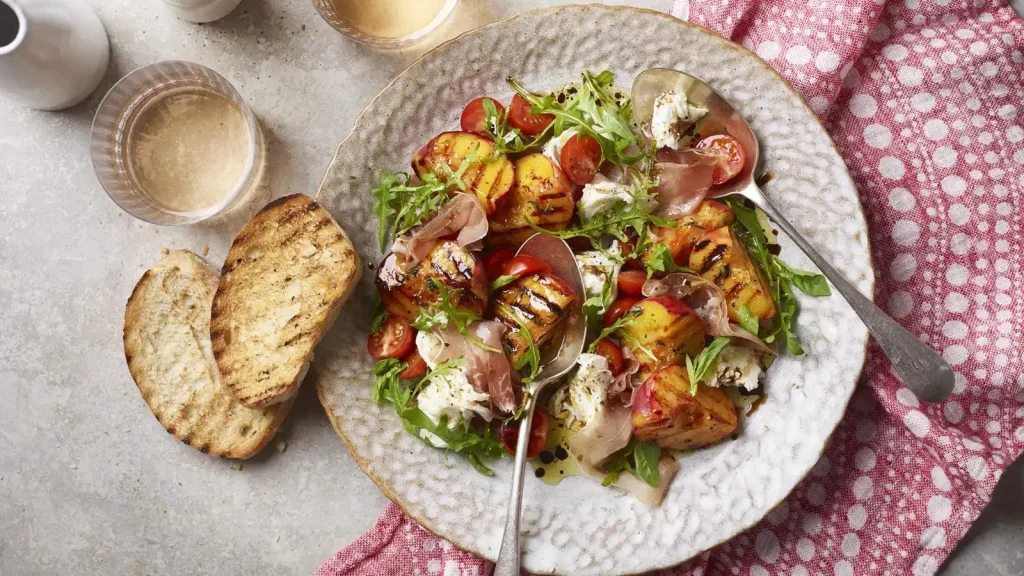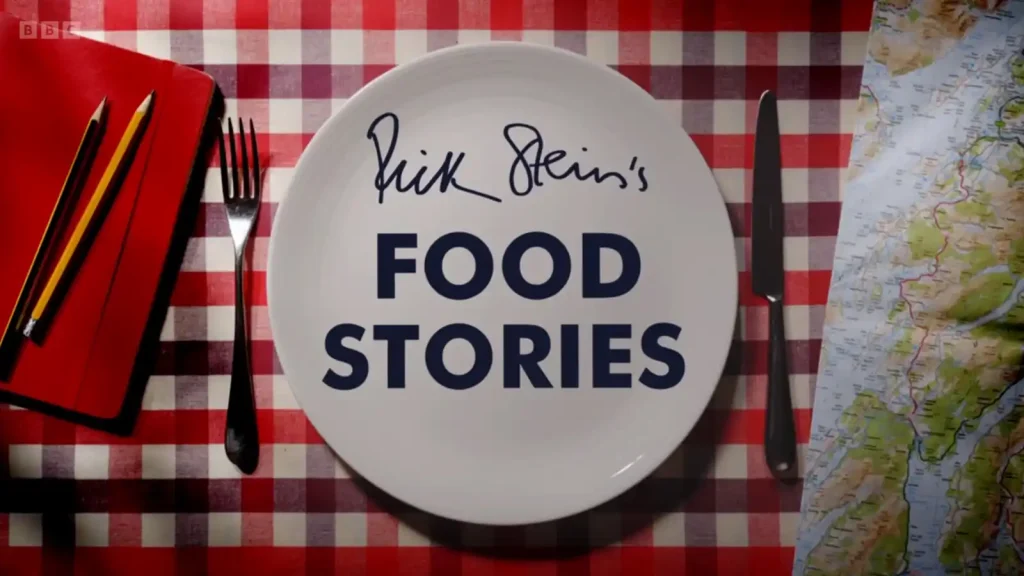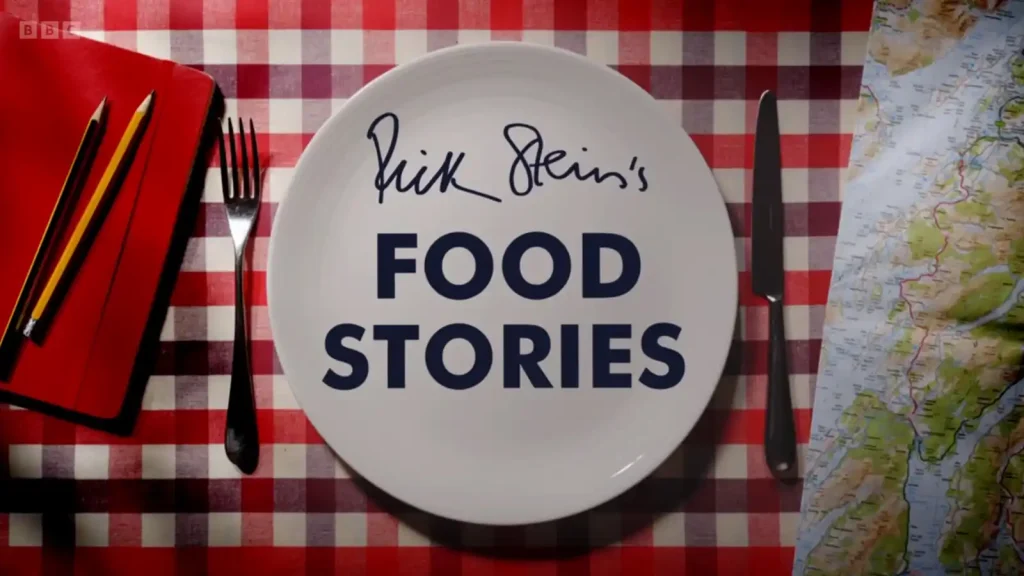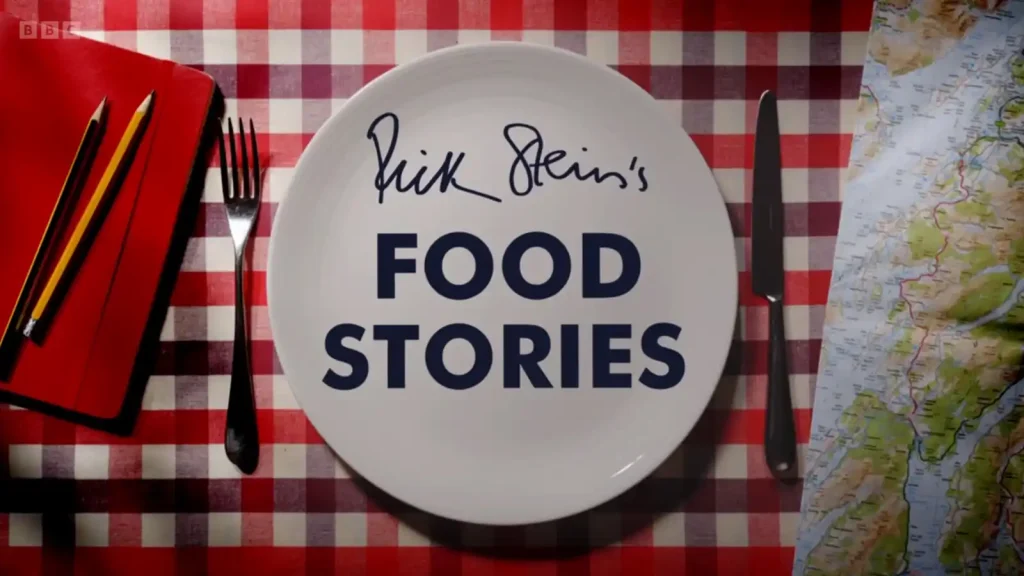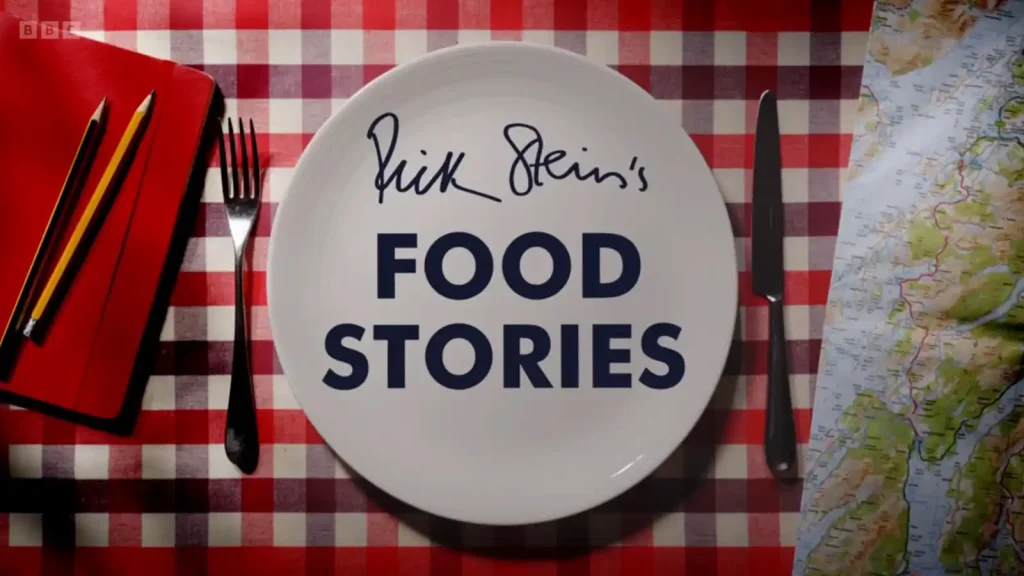Rick Stein’s Food Stories episode 9 – London part 1: Rick Stein returns to London, the vibrant city where his culinary journey first began. London, a melting pot of cultures and flavors, now boasts a staggering 120 world cuisines, making it a true global food capital. As Rick revisits this dynamic metropolis, he dives into the rich tapestry of culinary traditions that have shaped its diverse food scene.
His journey starts in the heart of Chinatown, where Rick is captivated by the intricate and time-honored art of dim sum making. Here, in the bustling kitchens, he observes the skillful hands of chefs as they craft these delicate, bite-sized parcels of flavor. Each dim sum is a work of art, representing generations of culinary expertise. The precision and dedication involved in creating these small dishes leave Rick in awe, as he gains a deeper appreciation for the cultural significance and meticulous craftsmanship that goes into every piece.
Next, Rick ventures to the leafy streets of west London, where he witnesses another culinary marvel—the process of mozzarella making. In this part of the city, where the Italian community has long been established, the art of cheese making is celebrated with passion and pride. Rick is drawn into the magic of transforming fresh milk into soft, creamy mozzarella, a staple in Italian cuisine. Watching the cheesemakers at work, stretching and shaping the curds by hand, Rick marvels at the simplicity and tradition behind this beloved cheese. It’s a reminder of how food connects people across cultures and generations, and how such simple ingredients can create something truly extraordinary.
As Rick explores the city’s culinary landscape, he meets with DJ and author Stuart Maconie, who has penned a book on the full English breakfast—a quintessentially British meal with a storied history. Over a hearty breakfast, Stuart shares with Rick the amusing and often bizarre variations of this national dish that he’s encountered during his travels. From regional twists to international adaptations, the full English has seen many incarnations, each reflecting the unique tastes and preferences of its makers. Stuart’s anecdotes offer Rick a humorous and insightful look into how this beloved breakfast has evolved, yet remains a symbol of comfort and tradition for many.
Rick Stein’s Food Stories episode 9 – London part 1
Inspired by his culinary explorations, Rick returns home to his kitchen, where he decides to cook a dish that has become a favorite in Chinese takeaways across Britain—beef chow mein. Drawing on the techniques and flavors he’s encountered in Chinatown, Rick prepares this classic stir-fry with his own signature touch. The sizzling beef, crunchy vegetables, and savory noodles come together in a dish that perfectly encapsulates the fusion of Chinese and British culinary traditions.
In this episode of “Rick Stein’s Food Stories,” London’s vibrant food scene is on full display. From the intricate artistry of dim sum to the simple pleasures of a full English breakfast, Rick highlights the city’s extraordinary diversity and the deep cultural connections that food fosters. Each dish, each story, is a testament to London’s status as a culinary crossroads, where flavors from around the world come together to create something truly unique.
As Rick reflects on his journey through London, he’s reminded of the city’s endless capacity to surprise and delight. Whether it’s discovering a new technique, savoring a familiar dish in a new way, or simply sharing a meal with a friend, London’s food scene offers endless opportunities for exploration and inspiration. And for Rick, it’s a return to where it all began—a city that continues to fuel his passion for food and storytelling.
Rick Stein’s Food Stories episode 9 – London is a celebration of the city’s culinary heritage, its vibrant present, and its exciting future. Through his encounters with the people and dishes that make London a true food lover’s paradise, Rick takes viewers on a journey that’s as much about the stories behind the food as it is about the flavors themselves.
London’s Culinary Melting Pot
Rick Stein’s Journey Through London’s Food Scene
As the bustling heart of the United Kingdom, London has long been a beacon for food lovers from around the globe. Rick Stein, a renowned chef with over five decades of culinary expertise, embarks on a gastronomic adventure through the city’s vibrant streets. His mission? To uncover the stories behind the dishes that have captured the hearts and taste buds of Londoners.
Stein’s journey is not just about food; it’s a deep dive into the cultural fabric of the city. As he navigates through London’s diverse neighborhoods, he encounters a tapestry of flavors that reflect the city’s rich history and multicultural heritage. From traditional British fare to exotic international cuisines, Stein’s exploration reveals how food has become a universal language in this cosmopolitan metropolis.
The Capital’s Diverse Culinary Landscape
London’s food scene is a testament to the city’s role as a global melting pot. Every corner of the capital offers a unique culinary experience, with flavors from virtually every corner of the world. This diversity is not just about variety; it’s a living, breathing representation of London’s history of immigration and cultural exchange.
In the East End, one might stumble upon a traditional pie and mash shop, a remnant of cockney culture, sitting comfortably next to a trendy vegan café. Meanwhile, Brick Lane buzzes with the aroma of fragrant curries, a legacy of the area’s Bangladeshi community. This juxtaposition of old and new, traditional and innovative, is what makes London’s food scene so captivating and ever-evolving.
Exploring London’s Unique Food “Villages”
As Stein delves deeper into his culinary exploration, he uncovers a fascinating aspect of London’s food culture – its distinct “villages.” These are not just geographical areas but culinary microcosms, each with its own unique flavors and dining traditions. From the upscale eateries of Mayfair to the eclectic food stalls of Borough Market, each area tells its own gastronomic story.
Take Chinatown, for instance. This bustling enclave in the heart of the West End is a sensory overload of sights, sounds, and most importantly, tastes. Here, traditional dim sum restaurants rub shoulders with bubble tea shops, offering a snapshot of China’s diverse culinary traditions. Similarly, Brixton Village has transformed from a traditional market into a foodie paradise, where Caribbean jerk chicken stands alongside artisanal pizza joints.
These food villages are more than just places to eat; they’re living, breathing communities that showcase London’s ability to embrace and celebrate culinary diversity. As Stein wanders through these neighborhoods, he discovers that each bite tells a story of migration, adaptation, and innovation – a delicious narrative of London’s ever-changing identity.
Chinese Cuisine’s Impact on British Food Culture
The Origins of Chinese Food in London
From Limehouse to Soho: The Evolution of Chinatown
The story of Chinese cuisine in London is as rich and layered as the flavors it brings to the table. It all began in the late 1800s when Chinese sailors, working for the East India Company, set foot in the docks of Limehouse. These intrepid travelers brought with them not just their labor, but a taste of home that would soon captivate British palates.
As the community grew, so did the demand for authentic Chinese flavors. Small eateries began to sprout up, offering a taste of the Orient to curious Londoners. However, it wasn’t until the bombs of World War II reshaped the city’s landscape that Chinatown found its new home in the heart of Soho. This migration marked the beginning of a culinary revolution that would forever change British food culture.
The Significance of Dim Sum in Chinese Cuisine
At the heart of this culinary revolution lies dim sum, a dining tradition that encapsulates the essence of Chinese food culture. Literally translating to “touch the heart,” dim sum is more than just a meal; it’s a social experience that brings families and friends together over small, exquisite portions of food.
The art of dim sum is a testament to the meticulous nature of Chinese cuisine. Each morsel, whether it’s a delicate dumpling or a fluffy bao, is crafted with precision and care. The variety of dim sum dishes, from savory to sweet, showcases the diversity of Chinese flavors and cooking techniques. As dim sum restaurants began to flourish in London’s Chinatown, they introduced Britons to a new way of dining – one that celebrates sharing, variety, and the joy of discovery with each bite.
Behind the Scenes at New Loon Fung Restaurant
The Art of Dim Sum Preparation
Stepping into the kitchen of New Loon Fung Restaurant is like entering a culinary laboratory where tradition meets innovation. Here, skilled chefs work tirelessly to create dim sum that not only satisfies hunger but also tells a story of cultural heritage. The process is a dance of precision and creativity, with each chef playing their part in a well-choreographed routine.
From the delicate folding of dumplings to the precise steaming times, every step in dim sum preparation is crucial. The dough for har gow (shrimp dumplings) must be thin enough to reveal the pink of the shrimp within, yet strong enough to hold its shape. Meanwhile, the filling for siu mai (open-topped dumplings) is a carefully balanced mixture of pork, shrimp, and mushrooms, each ingredient chosen for its flavor and texture contribution.
Meeting Shun-Bun Lee: A Dim Sum Master’s Story
At the helm of New Loon Fung’s dim sum operation is Shun-Bun Lee, a master chef whose journey mirrors that of Chinese cuisine in London. Arriving in 1975 with dreams of culinary success, Lee has spent over four decades perfecting his craft. His dedication has not gone unnoticed, earning him the prestigious Observer Food Lifetime Achievement Award.
Lee’s philosophy is simple yet profound: maintain tradition while embracing innovation. He believes that the key to great dim sum lies not just in the ingredients or techniques, but in the passion and respect for the culture it represents. Under his guidance, New Loon Fung has become more than just a restaurant; it’s a cultural institution where each dim sum basket serves as an ambassador of Chinese culinary heritage to British diners.
Italian Influence and British Food Innovation
La Latteria: Bringing Italian Cheese-Making to London
Simona Di Vietri’s Journey from Banking to Cheese-Making
In the heart of West London, a culinary revolution is quietly taking place. La Latteria, a small but mighty dairy, is redefining what it means to enjoy authentic Italian cheese in the UK. At the helm of this cheese-making venture is Simona Di Vietri, a woman whose passion for food led her to trade spreadsheets for cheese cloths.
Simona’s story is one of courage and culinary conviction. Once a successful investment banker, she found herself yearning for a taste of home – the fresh mozzarella of her childhood in Italy. Unable to find a satisfactory substitute in London, Simona did what any food-loving entrepreneur would do: she decided to make it herself. This bold move wasn’t just about satisfying her own cravings; it was about bringing a slice of Italian culinary tradition to British shores.
The Art and Science of Mozzarella Production
At La Latteria, mozzarella-making is elevated to an art form. The process begins with the selection of the finest British milk, sourced from West Country dairy herds. This choice of local ingredients is not just a nod to sustainability; it’s a testament to the quality of British produce. Interestingly, the milk’s rich, yellow hue – a result of the cows’ grass-fed diet – initially gave Simona pause. However, she soon realized that this was a unique selling point, a sign of the cheese’s superior quality and flavor.
The transformation of milk into mozzarella is a delicate dance of chemistry and craftsmanship. First, rennet is added to the milk, kickstarting a chemical reaction that turns liquid into solid curds. These curds are then carefully heated, stretched, and molded by skilled hands into the familiar ball shape we all know and love. The result? A mozzarella that’s both a tribute to Italian tradition and a celebration of British ingredients.
British-Italian Fusion: Mozzarella and Roasted Peach Salad
Rick’s Alfresco Cooking Adventure
Inspired by La Latteria’s fresh mozzarella, Rick Stein embarks on a culinary adventure that marries Italian tradition with British flair. Despite the characteristically unpredictable British weather, Rick sets out to create an alfresco salad that showcases the versatility of this locally-made Italian cheese. His choice of companion for the mozzarella? The humble peach, grilled to perfection.
As Rick fires up the barbecue, the air fills with the promising aroma of summer. The peaches, brushed with olive oil, sizzle on the grill, their natural sugars caramelizing to create a perfect balance of sweet and savory. This outdoor cooking method isn’t just about flavor; it’s about embracing the British summer in all its unpredictable glory. After all, what could be more quintessentially British than braving the elements for the sake of good food?
The Perfect Combination of British and Italian Flavors
The resulting dish is a symphony of flavors and textures that tells the story of culinary fusion. At its heart is the star of the show – La Latteria’s mozzarella, creamy and indulgent. Surrounding it is a cast of supporting characters: grilled peaches, their sweetness intensified by the heat; peppery rocket and delicate pea shoots, providing a fresh contrast; and prosciutto, adding a savory depth.
But what truly elevates this dish is the addition of classic British summer produce. Cherry tomatoes, bursting with flavor, and fragrant basil complete the palette. A drizzle of olive oil ties everything together, creating a dish that’s more than the sum of its parts. It’s a tangible representation of how Italian culinary traditions have been embraced and adapted in Britain, resulting in something entirely new and utterly delicious.
As Rick savors his creation, he muses on the beauty of simplicity in cooking. This salad, born from a fusion of cultures and a respect for quality ingredients, embodies the evolving nature of British cuisine. It’s a testament to how foreign influences, when combined with local produce and a dash of creativity, can result in dishes that are both innovative and comfortingly familiar.
Honey grilled peaches and mozzarella salad

Celebrating gorgeous UK made mozzarella, this roasted peach salad reminds me of lovely sunny lunches in Sydney. I’ve said to grill the peaches and ciabatta on a griddle pan but if you fancy lighting a barbecue, particularly a charcoal one, the result is extra special.
Ingredients:
For the salad
- 2 slightly underripe peaches, cut into quarters and stones removed
- 1 tsp olive oil
- few thyme sprigs, leaves picked
- handful of rocket, pea shoots or lambs lettuce
- handful of cherry tomatoes, halved
- 2–4 slices prosciutto or Parma ham, torn into pieces
- 125/4½oz–150g/5½oz mozzarella ball
- 1 tbsp clear honey
- 2–3 tbsp extra virgin olive oil
- 1 tsp balsamic vinegar
- few basil leaves, torn
- flaked sea salt and freshly ground black pepper
To serve
- 2 large slices of ciabatta or a ciabatta roll cut in half through the middle
- 1 large garlic clove, peeled and bashed
- 2 tbsp extra virgin olive oil
Method:
- Serve at once with the griddled bread.
- Brush the peach pieces with the olive oil. Place them on a preheated griddle, over a medium heat, and grill for 5–7 minutes until softened slightly and lightly charred. Transfer the peaches to a plate and season with the thyme leaves and some black pepper. Set aside while you grill the bread.
- Toast the bread in the same griddle pan until lightly charred and starting to crisp. Rub both cut sides with the bashed garlic clove and brush with the extra virgin olive oil.
- Put the salad leaves, cherry tomatoes and torn prosciutto in a bowl or platter. Add the peaches. Tear the mozzarella into large pieces and scatter over the salad. Drizzle with the honey, extra virgin olive oil and balsamic vinegar. Then scatter over the basil leaves and some flaked sea salt.
F.A.Q. Rick Stein’s Food Stories episode 9 – London part 1
Q.: What is the main focus of Rick Stein’s Food Stories episode 9 – London part 1?
A.: The main focus of this episode is Rick Stein’s exploration of London’s diverse culinary scene. He revisits the city where his culinary journey began, delving into the rich tapestry of global cuisines that have shaped London’s reputation as a world food capital. The episode highlights various food traditions, including the art of dim sum making in Chinatown and mozzarella production in west London.
Q.: How does Rick Stein explore the cultural significance of dim sum in this episode?
A.: Rick Stein explores the cultural significance of dim sum by visiting Chinatown, where he observes the meticulous process of creating these bite-sized delicacies. He watches skilled chefs craft each piece with precision, reflecting generations of culinary expertise. Through this experience, Rick gains a deeper appreciation for the cultural heritage embedded in every dim sum dish, which has become an integral part of London’s diverse food culture.
Q.: What culinary traditions are highlighted in west London during Rick Stein’s journey?
A.: In west London, Rick Stein highlights the Italian tradition of mozzarella making. He visits a local dairy where the process of transforming fresh milk into creamy mozzarella is celebrated. This segment showcases the passion and pride of the Italian community in preserving their culinary traditions in London, emphasizing the simplicity and tradition behind one of Italy’s most beloved cheeses.
Q.: How does Rick Stein incorporate his culinary discoveries into his own cooking?
A.: Inspired by his culinary discoveries in London, Rick Stein returns to his kitchen to prepare a dish that blends the flavors and techniques he encountered. In this episode, he cooks beef chow mein, a dish that has become a staple in Chinese takeaways across Britain. By drawing on his experiences in Chinatown, Rick adds his own signature touch to this classic stir-fry, creating a dish that reflects the fusion of Chinese and British culinary traditions.
Q.: What is the significance of the full English breakfast in this episode of Rick Stein’s Food Stories?
A.: The full English breakfast holds a significant place in this episode as Rick Stein discusses its history and variations with DJ and author Stuart Maconie. The breakfast symbolizes British culinary tradition, with its many regional and international adaptations reflecting the evolving tastes of the nation. Stuart’s insights offer a humorous and informative look at how this iconic meal has remained a comforting and enduring part of British culture.
